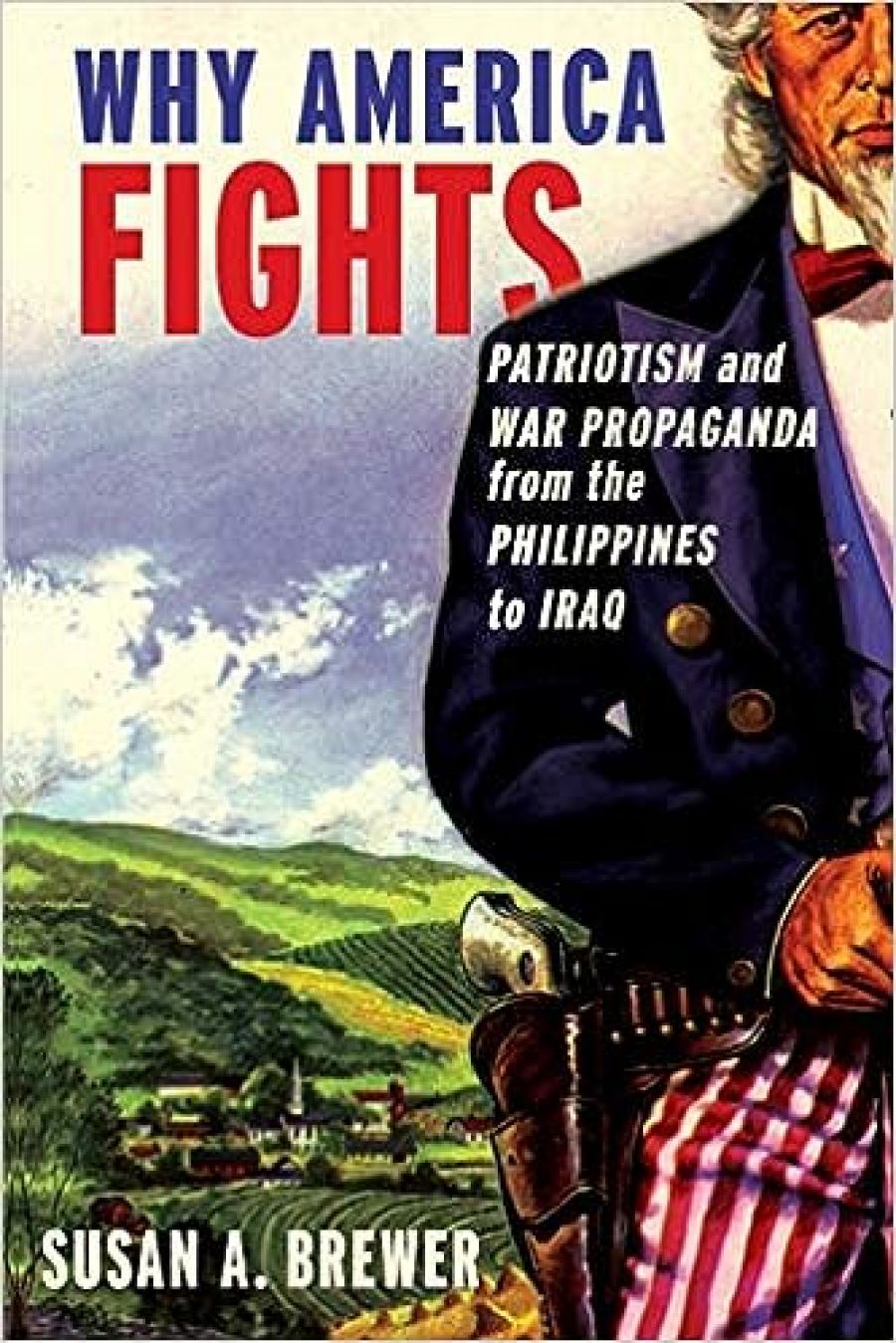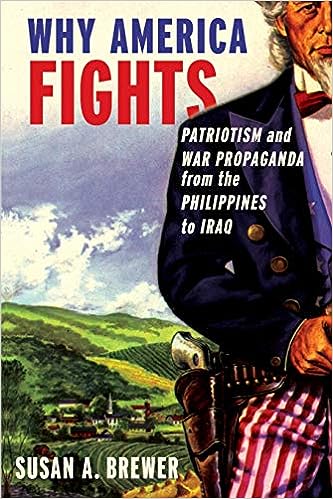
- Free Article: No
- Contents Category: Military History
- Review Article: Yes
- Article Title: Lurking in the American mind
- Article Subtitle: Troubling aftertastes from a brilliant study of war
- Online Only: No
- Custom Highlight Text:
In September last year the impressive military intellectual David Kilcullen gave the prestigious annual ‘University Lecture’ to the assembled cohort of cadets, midshipmen, officers, academic staff and senior leadership of the Australian Defence Force Academy and its partner institution, the University of New South Wales. I was especially struck by Kilcullen’s argument, to the young officer trainees, that their future responsibilities would be important because war and conflict had been perennial features of human society since ancient times, and would persist despite efforts to create a more peaceful world. Was this, I wondered, the only way to impress upon the future leadership of the ADF the seriousness of their calling?
- Book 1 Title: Why America Fights
- Book 1 Subtitle: Patriotism and war propaganda from the Philippines to Iraq
- Book 1 Biblio: OUP, $55 hb, 342 pp
- Book 1 Cover Small (400 x 600):

Kilcullen’s writings and career suggest he understands this very well. His book The Accidental Guerrilla (2009) includes a long analysis of how Western policies in the Middle East contributed to worsening the conflict against Islamist extremism, and as an adviser on counter-insurgency to General David Petraeus and General Stanley McChrystal, he made a valuable contribution to reorienting US strategy and tactics in Iraq and Afghanistan away from heavy-handed efforts to fight and kill insurgents, to protecting populations from intimidation and ethnic cleansing – promoting sustainable development, and effective and legitimate government. These approaches helped end the civil war and Sunni insurgency in Iraq, and provide the only hope of salvaging a grim situation in Afghanistan and north-west Pakistan.
Published as Barack Obama committed thirty thousand more US troops to that conflict, Susan A. Brewer’s brilliant and important study of patriotism and war propaganda in six American wars – the Philippines, the Great War, World War II, Korea, Vietnam and Iraq – reminds us that war is a construct of ideologies, doctrines, beliefs, lies, truths and delusions; and that choice remains its fundamental moral challenge. She has avoided choosing easy cases – there are examples here of wars just, unjust and ambiguously in-between – and she consistently highlights the confusion, dissent and uncertainty that plague the large-scale resort to armed conflict.
While her book’s focus is on the role and implications of propaganda and public relations, its analysis is much richer. It contains not merely an incisive analysis of how propaganda systems worked, but also complex discussions of how war aims were debated, sold and challenged, of how attempts to control information were embarrassed by contrary facts and brave journalism, of how great social and political complexity were too often reduced to simplistic contrasts, and how enormous suffering and tragedy were often the result. A lingering impression from the book is that, even as propaganda techniques have become ever more sophisticated – with the Bush administration ‘selling a pre-packaged war against Iraq in 2003’ using ‘a strategy of credulity’ – citizens and media are in fact becoming ever less credulous. Whether this means that public debate about war is more informed and democratic is far less clear, a concern that lingers when the book is put down, like a troubling aftertaste.
The book closely examines four key facets of the problem: organised propaganda, censorship and public information operations; grand narratives of American identity and mission; portrayals of the enemy and appeals to patriotism; and the often tragic dis-connect between the public rationales for war presented by officials and their private knowledge.
One powerful line of argument is how narratives of American identity and ideals – manifest destiny, civilisation, individual liberty, and the spread of freedom – were mobilised to justify the use of force and secure public consent, yet served either to obscure the ruthless pursuit of strategic interests or were shaken when they were revealed. Even as American dissenters denounced the brutal takeover of the Philippines in 1898, President William McKinley declared that ‘no imperial designs lurk in the American mind’; Woodrow Wilson’s attempt to portray the Great War as one to ‘keep the world safe for democracy’ and sweep away the old rule of imperialism and power politics, much like Roosevelt’s presentation of the ‘Atlantic charter’ as war aims in World War II, was discredited by the cynicism and power-grabbing of the subsequent peace; in Korea and Vietnam, the idealistic rhetoric about keeping the world safe from communism and the strategic imperatives of ‘containment’ never quite squared with the revelations of atrocities against civilians, the enormous loss of life and the general sense of stalemate; and, while heading to Baghdad in 2003 a marine corporal singing ‘one, two, three, four, what the fuck are we fighting for?’ was asked by his lieutenant to answer his own question. He replied: ‘Well, sir, I guess I’m fighting for cheap gas and a world without ragheads blowing up our fucking buildings.’
Other themes echo back and forth through time: the construction of the ‘war on terror’ as a clash between civilisation and barbarism recalled McKinley’s framing of war in the Philippines, Wilson and Roosevelt’s portrayal of a clash between democratic values and those of the enemy, and Truman’s argument that Korea was ‘the front line in the struggle between freedom and tyranny’. Prefiguring Vietnam and Iraq, war in the Philippines segued from a conventional to a guerrilla conflict, one fought increasingly brutally by US General Arthur MacArthur; and McKinley and Theodore Roosevelt tried to declare the war over on six separate occasions. The administrations of McKinley, Wilson, Johnson, Nixon and Bush all sought to silence dissent and to tar critics of their wars as unpatriotic, however profound their criticisms.
Brewer’s description of the growing sophistication of government propaganda operations makes for disturbing reading. Presi-dent McKinley, the first to have his inauguration filmed, created a large staff to monitor press coverage and paid special attention to wire services; Wilson established a fully fledged propaganda agency, the Committee on Public Information, which ‘combined the most modern methods of persuasion with messages of American greatness’ and an aggressive system of censorship; Roosevelt established an Office of War Information that worked closely with radio and Hollywood; Kennedy developed the art of ‘news management’, the news conference and the Pentagon briefing; and the Bush administration used the White House communications office to ‘seize the media offensive’, ‘win every news cycle’ and conduct ‘perception management’.
These techniques extended to the construction of elaborate simulacra. To create a pretext to seize the Philippines and ignore the independence movement led by Emilio Aguinaldo, the US command ‘worked a deal with the Spaniards to stage a mock battle of Manila’ where ‘they would shoot at each other and then Spain would surrender before the Philippine army of liberation could take part’. In Vietnam, the Johnson administration spun a small and ambiguous naval engagement with North Vietnamese forces in the Tonkin Gulf to secure authority from Congress to escalate the war. The Bush administration (one of whose officials apocryphally boasted to a journalist that ‘a judicious study of discernible reality … was not the way the world really works any more’) took the practice to a new level. The deliberate manufacture of evidence of an Iraqi weapons of mass destruction program – presented to Congress, The New York Times and the United Nations – is by now notorious; other highlights included the staging of CENTCOM briefings in Qatar, directed by the White House deputy communications director, using a $250,000 film set, and the elaborately staged declaration of ‘victory’ by President Bush after being flown onto the USS Abraham Lincoln just off San Diego, at a rumoured cost of $1 million.
This said, Brewer’s narrative is far from a simplistic vision of élite perfidy (as might be seen from the left) or cunning Machiavellian statecraft (from the right). One of her most powerful insights is that ‘the clarity of official narratives may be blinding … not only to the public but to the officials that deliver them’. In short, policymakers can become hostage to their own illusions. In this light, systematic official lying, an all too common adjunct to censorship and spectacle, takes on a tragic quality – as exemplified by the Bush administration’s promotion of war against Iraq while its preparations for the occupation were the subject of great conflict within the US government, and by the Johnson administration’s public case for escalation in Vietnam while, behind closed doors, officials were despairing of their prospects for success. Brewer reminds us that ‘in the end, war aims must be achieved in the real world, not in the dramatic version presented by propaganda’.
This, I suspect, was understood keenly last year as Obama administration officials conducted a painstaking review of their aims and strategy in Afghanistan, a campaign whose compelling necessity seems to be matched only by its sobering complexity and difficulty. The frank and downbeat presentation of the commitment by Obama in his speech at West Point was in dramatic contrast to the propagandist framing of previous wars which, laments Brewer, ‘seldom portrayed real war fought by real human beings who were not symbols of good or evil’. This surely is what we owe to ourselves as citizens, to the communities trapped in the conflict zone, and to that lecture hall filled with young officers-to-be.


Comments powered by CComment